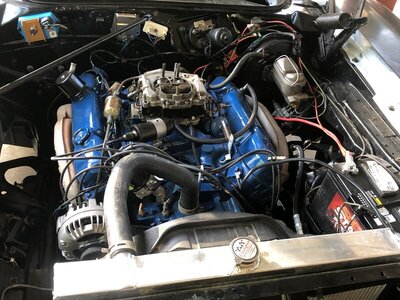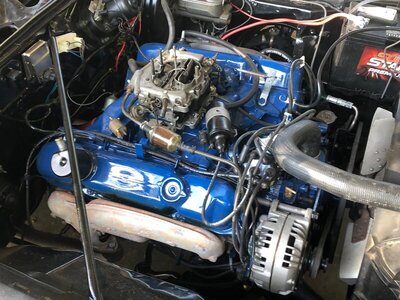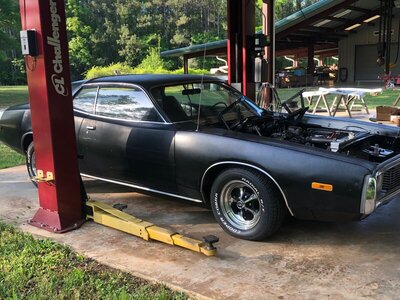- Local time
- 2:44 PM
- Joined
- Feb 29, 2020
- Messages
- 3,096
- Reaction score
- 5,798
- Location
- Heart of Dixie.....
Guys, kinda of a bittersweet moment. Had this 73 basket case for years and finally got serious with making it roadworthy again. Reworked my first 440 backup to somewhat stock set points. Used a Howards cam and lifters at a bit over a stock cam, TQ and cast intake. At first fire up for cam break the pass side exhaust manifold seemed to get hotter than the driver side. I had timing off for a bit but got it set after a 25 minute run at 2300 rpm. Got some fine tuning done and it idled great, put about 25-30 miles on it, running good. I changed oil and filter and failed to put any zddp add on in the oil. I know better now. Still concerned about a lean condition I pulled the TQ carb and reverified it was a from a 73 440 automatic and had the correct listed jet rods and nothing unusual was found.
On my next ten mile drive it was running terrible when I got home, like a dead cylinder. Pulled the plugs, all looked the same. With my compression checker I was able to check only six cylinders, all running spot on at 158 pounds. Initial timing was set at 16 degrees with vacuum near 18 inches earlier and now vacuum gage was swinging wildly between 8 and 15 inches.
I just pulled and examined all the lifters and they all looked perfect. If I had had a lobe failure would not there be visible lifter face damage? Just turning over the engine and seeing what I can see from the lifter gallery, all looks good. Now Im starting to think I just had the cast iron intake manifold with a bad vacuum leak that got worse. What am I missing....thanks all.



On my next ten mile drive it was running terrible when I got home, like a dead cylinder. Pulled the plugs, all looked the same. With my compression checker I was able to check only six cylinders, all running spot on at 158 pounds. Initial timing was set at 16 degrees with vacuum near 18 inches earlier and now vacuum gage was swinging wildly between 8 and 15 inches.
I just pulled and examined all the lifters and they all looked perfect. If I had had a lobe failure would not there be visible lifter face damage? Just turning over the engine and seeing what I can see from the lifter gallery, all looks good. Now Im starting to think I just had the cast iron intake manifold with a bad vacuum leak that got worse. What am I missing....thanks all.



















